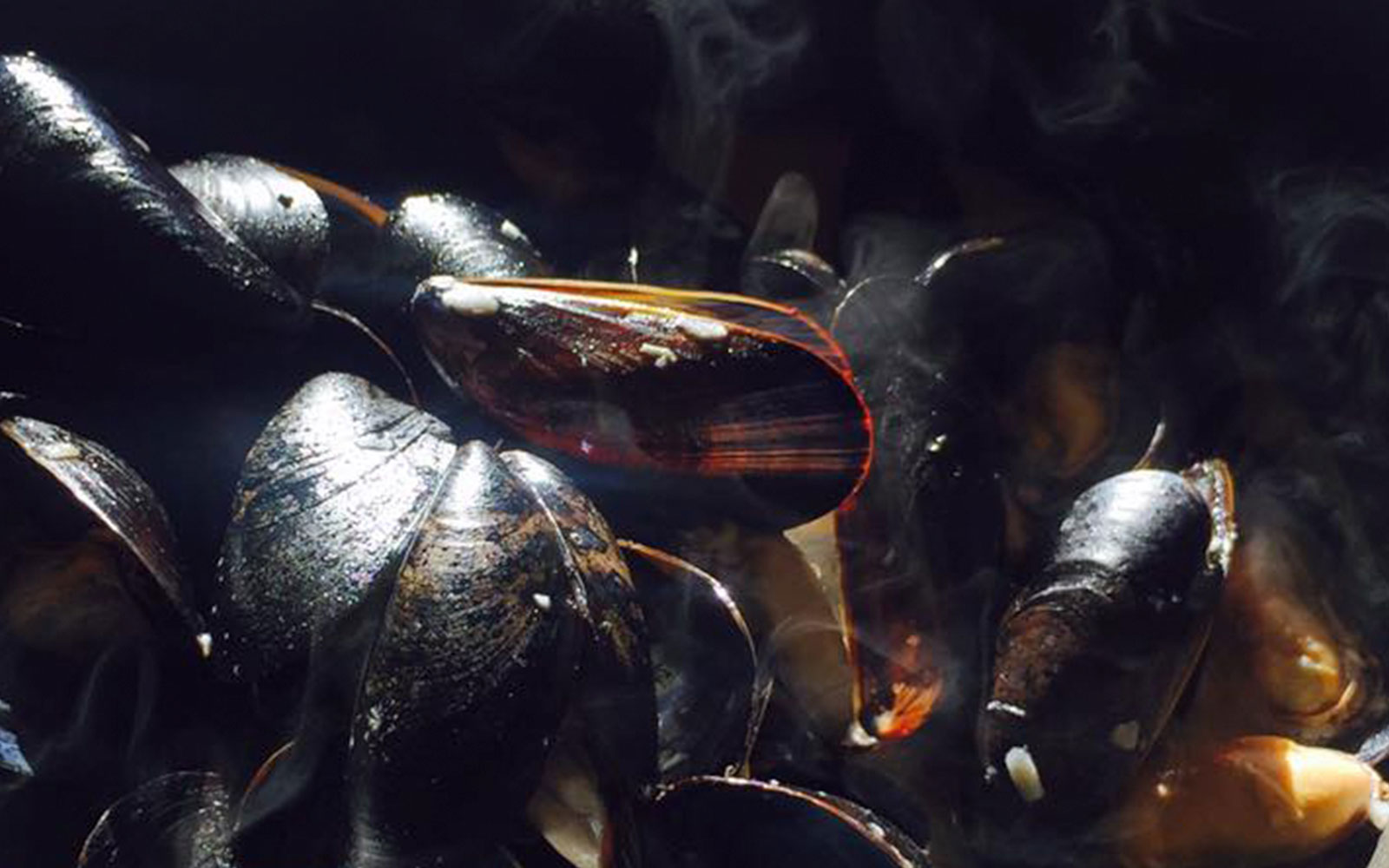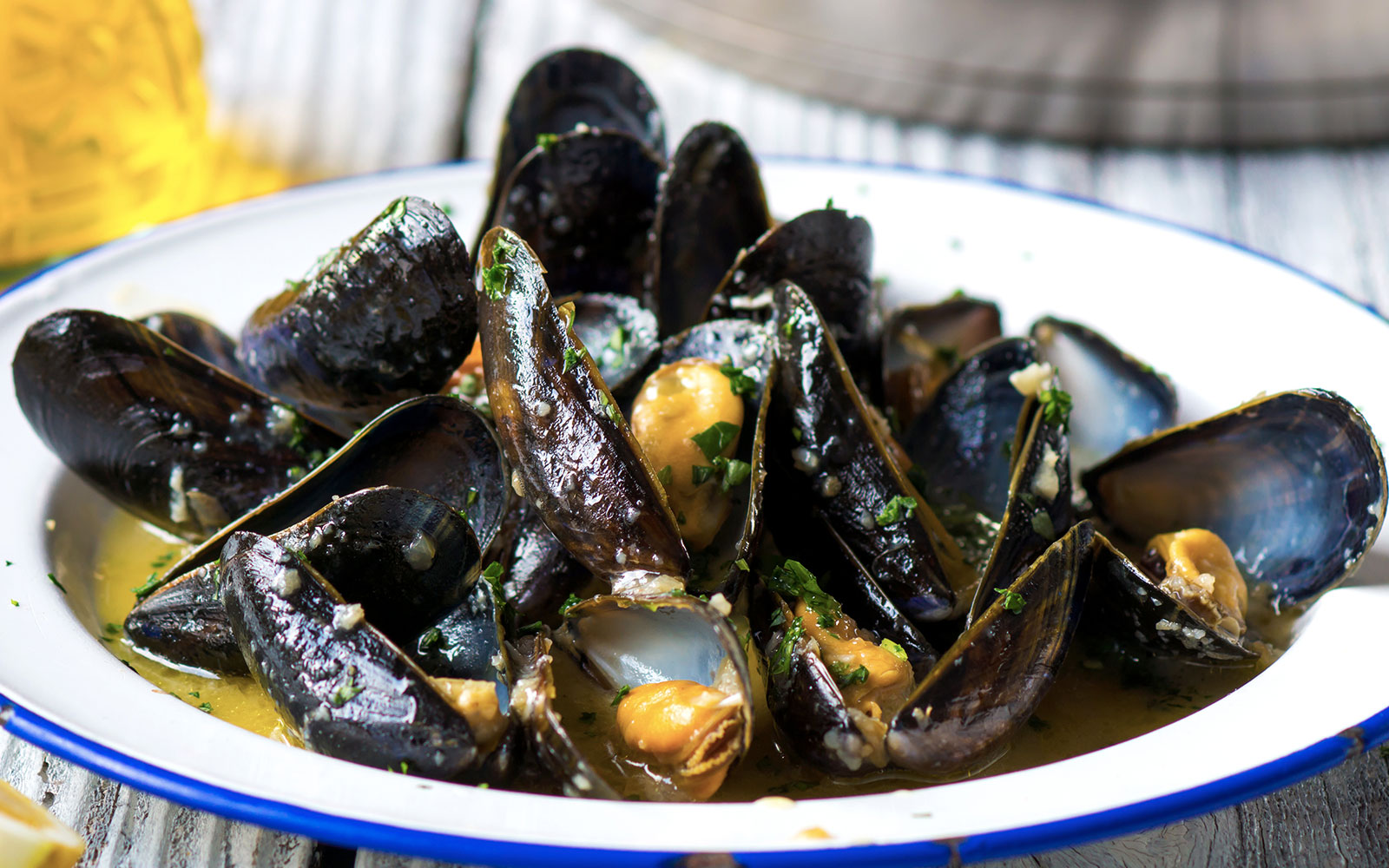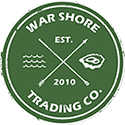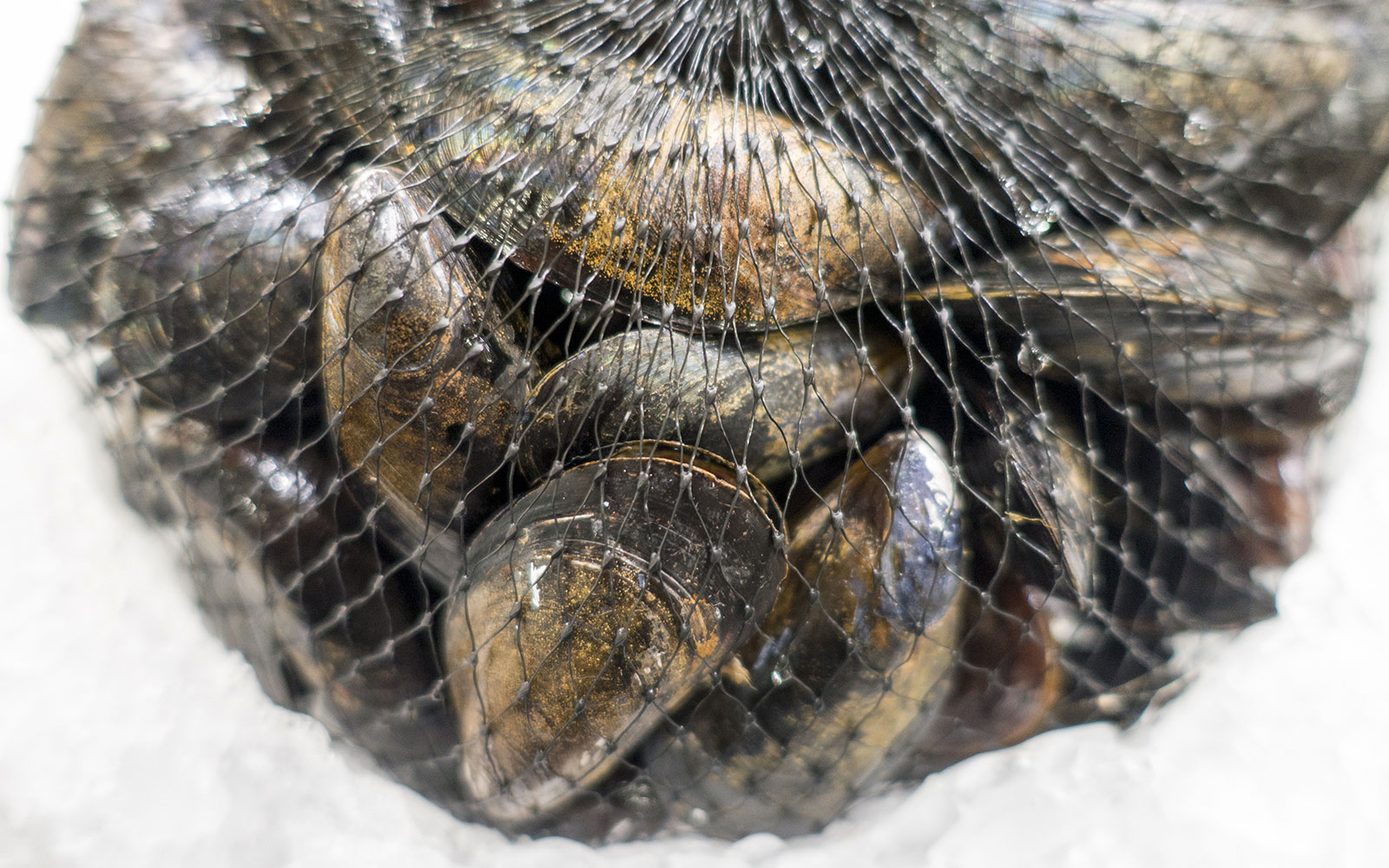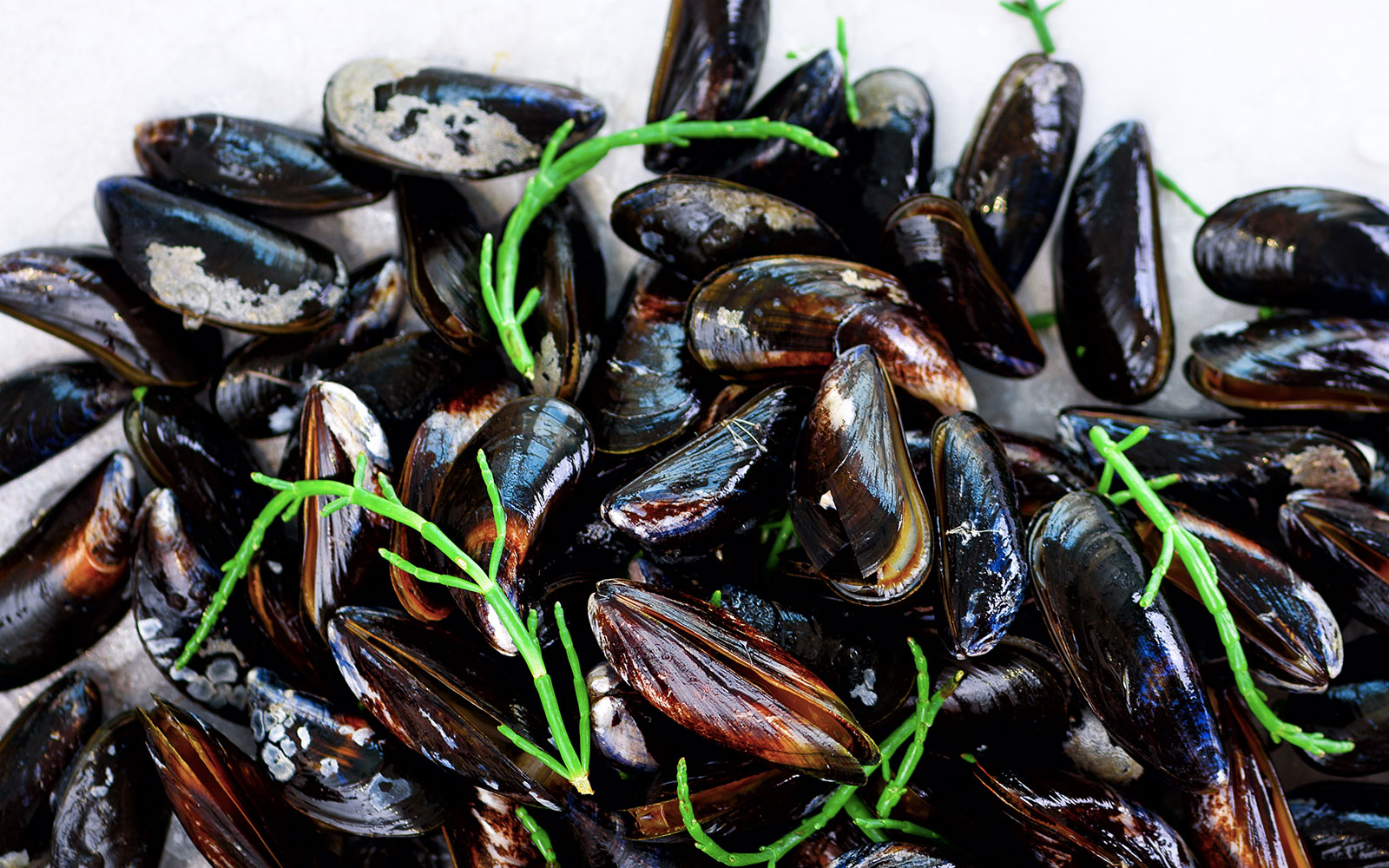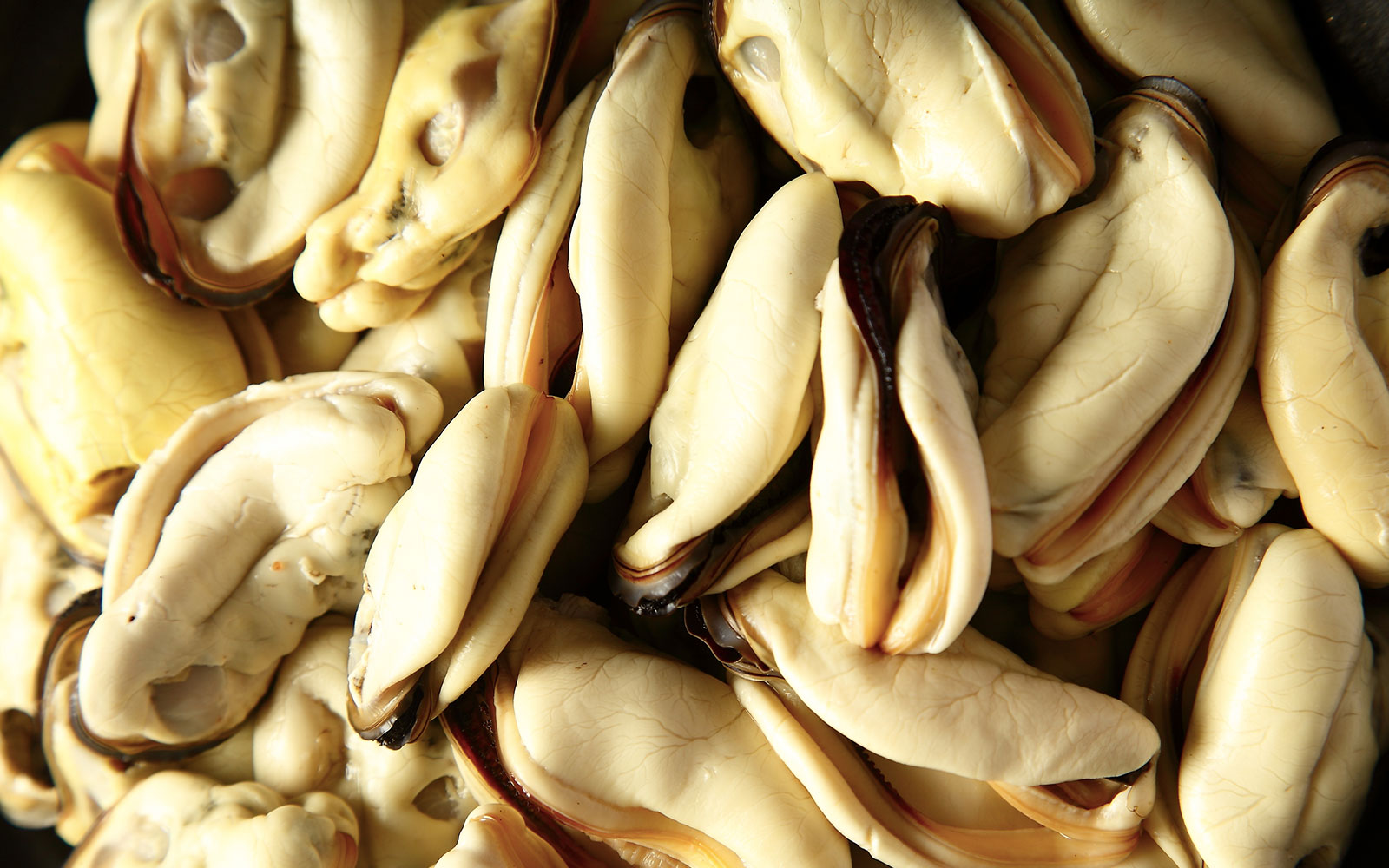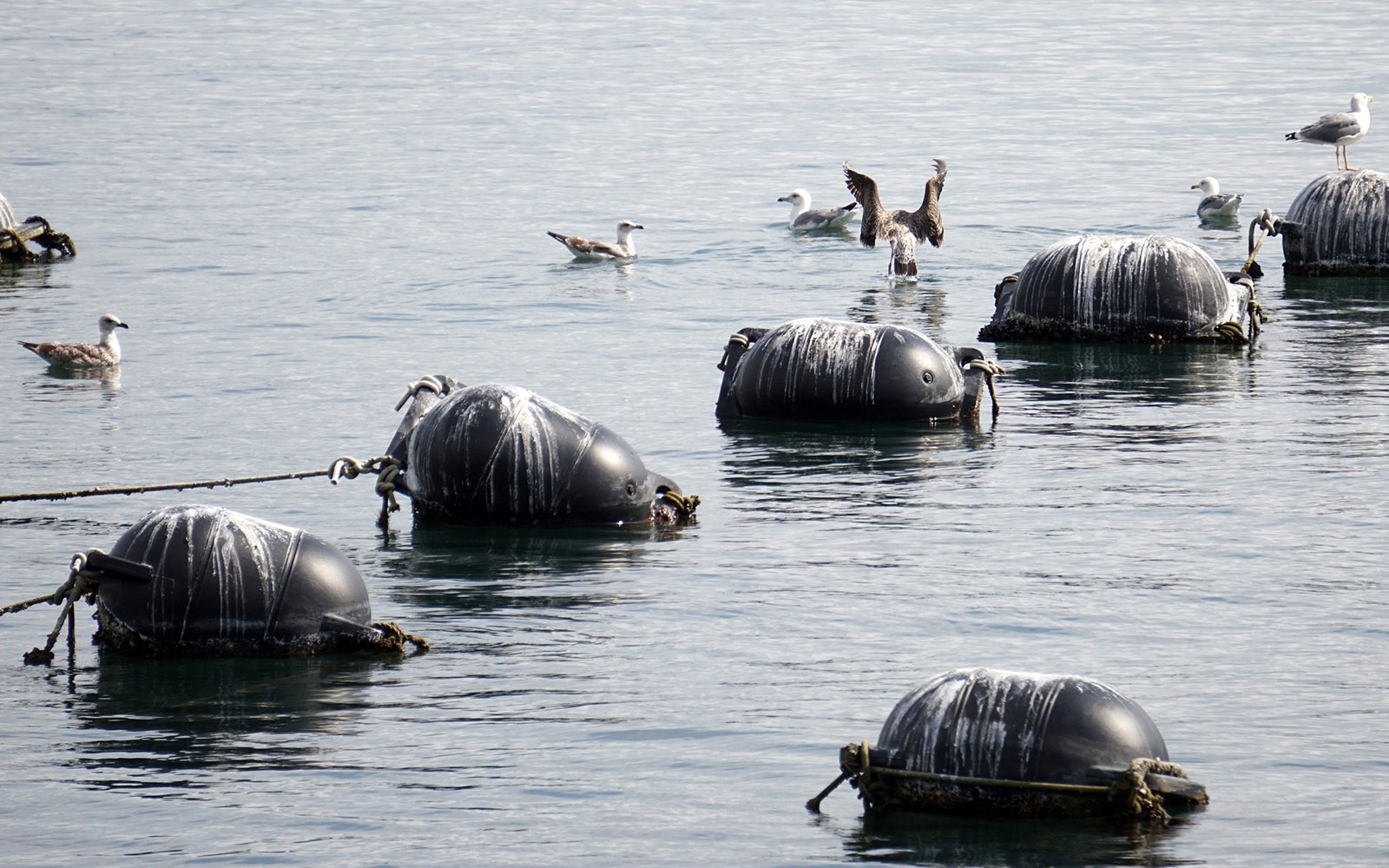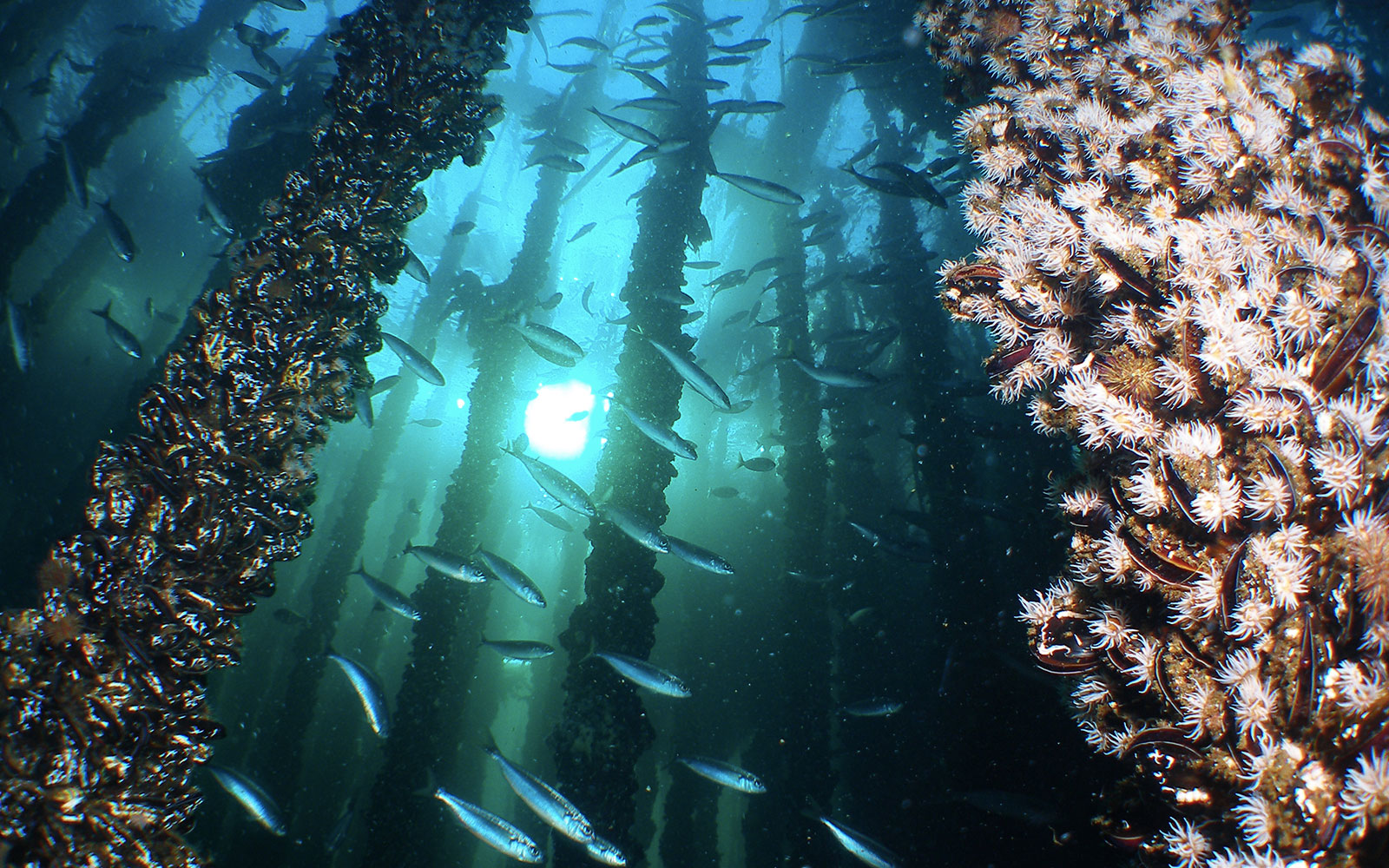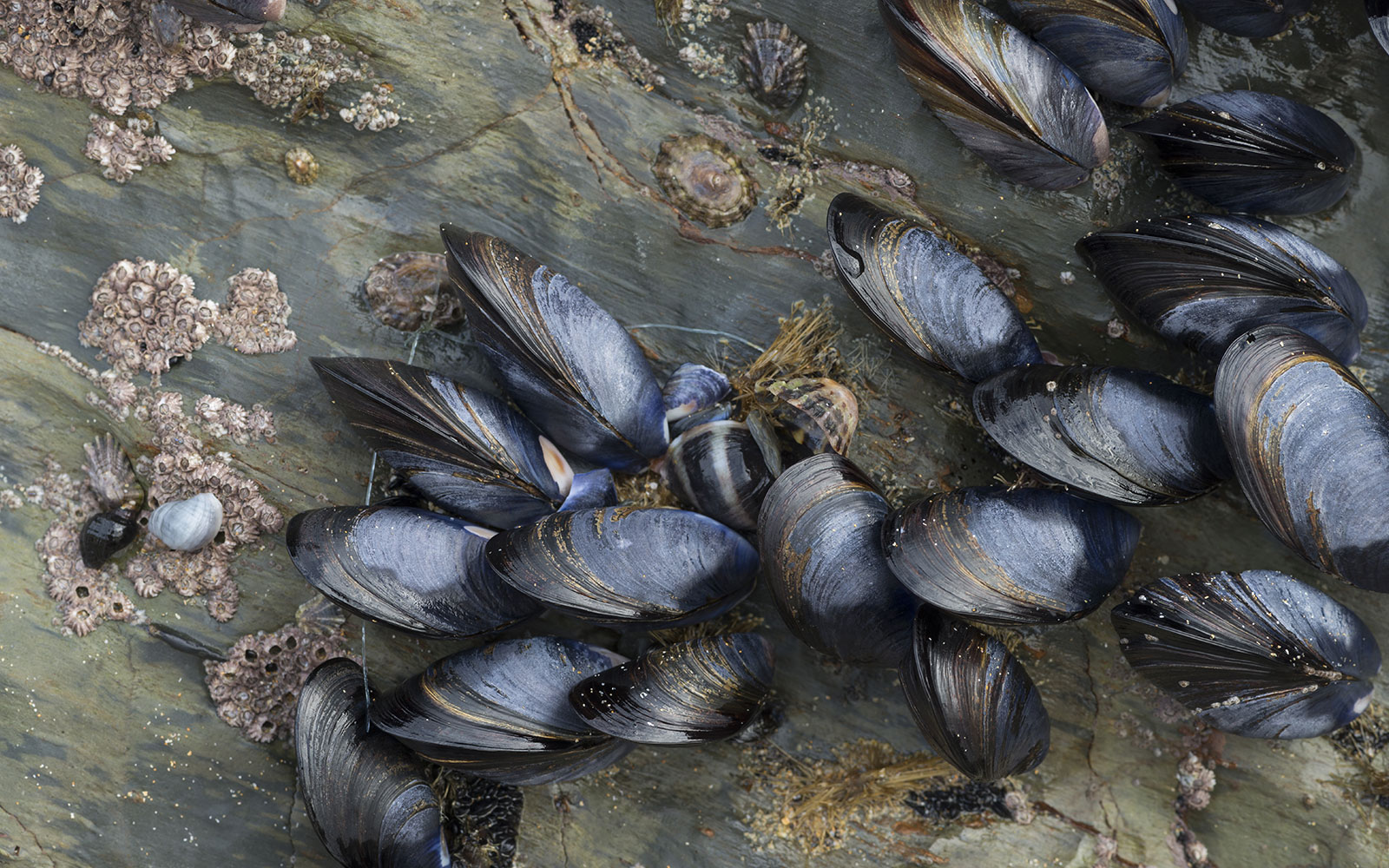MUSSELS
War Shore works with mussel (Mytilidae) farmers in Canada, Maine, and Washington to bring our customers fresh, clean, and meaty mussels. This bivalve mollusca is another example of a highly sustainable shellfish that is used in a variety of dishes.
The mussels we source are grown using one of four techniques:
Bouchot culture: Intertidal growth technique involves planting pilings at sea with ropes attached and tied in spirals. The mussels grow on top of the spiralling ropes and sometimes mesh netting is attached to prevent mussels from falling away. This method needs an extended tidal zone.
On-bottom culture: This method is based on the principle of transferring mussel seed (spat) from areas where they have settled naturally to areas where they can be placed in lower densities to increase growth rates, facilitate harvest, and control predation.
Raft culture: Lines of rope mesh socks are seeded with young mussels and suspended vertically from a raft. The specific length of the socks depends on depth and food availability.
Longline culture (rope culture): A long-line is suspended by a series of small anchored floats and ropes or socks of mussels are then suspended vertically from the line.
War Shore works hard to identify and deliver the cleanest and meatiest mussels in the market. Our just-in-time inventory is critical in preventing dead loss of this less hardy shellfish.
